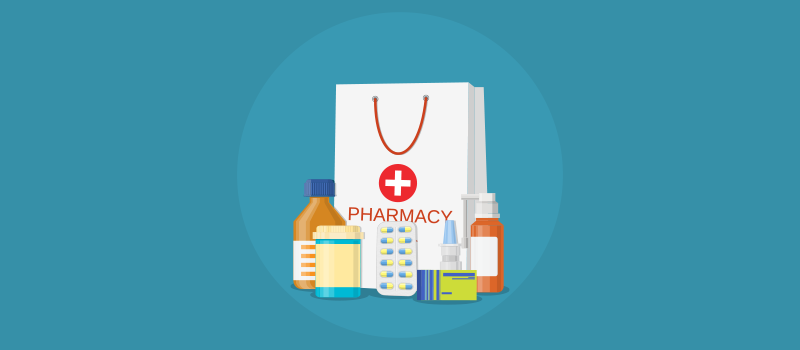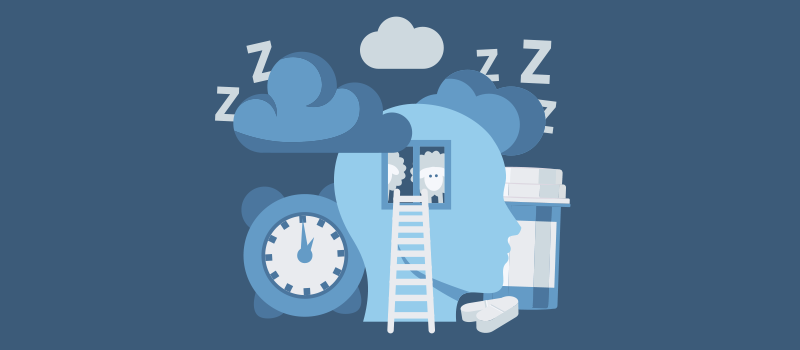What’s the Buzz
The Bee Healthy Blog
12 Medications With Off-Label Uses

Depending on the type of drugs and therapies, the U.S. Food and Drug Administration (FDA) has to undergo several rigorous phases before approving new medications. This process is in place to ensure the safety and efficacy of the new drugs. Therefore, this process can be quite lengthy, data has shown that the approval process of a new drug takes 12 years on average. Many people wonder why the drug approval process takes a decade on average. First, for a new drug to be approved, the drug manufacturer has to prove that the drug is safe and effective with adequate clinical data. Once the FDA approves a new drug, it means that when using this drug for an approved condition, the potential benefits outweigh the potential risks.
Even after the drugs are marketed, the FDA continues to monitor their safety and efficacy profiles using “real-world” data. The term “on-label use” of a drug may seem unfamiliar to most people. However, it simply means the medication is prescribed to treat the health condition approved by the FDA, in addition to the fact that the population uses the drug that the FDA also approves.
Interestingly, once the FDA approves a drug, healthcare providers can use their clinical judgment to use this approved drug to treat a health condition or symptoms that the FDA does not approve. In short, this practice is referred to as “off-label” drug use.
Surveys have shown that approximately 1 in 5 prescriptions in the US are for off-label use. In certain populations of patients, off-label drug use is even higher. One study found that almost 8 out of 10 children discharged from pediatric hospitals are on at least one off-label drug. Some off-label drugs have even become the first-line treatment for a condition.
Please continue reading to learn more about off-label drug prescribing and drug safety. We will also list some common examples of off-label drug use.
What is off-label drug use?
Off-label drugs are approved drugs prescribed for an indication, a patient population, a dose, or a dosage form that has not been approved through the usual FDA approval process.
Examples of common off-label uses when currently available and marketed drugs are:
- Prescribed for an indication (disease or symptom) that has not received FDA approval. For example, if approved treatments for certain types of cancer are used to treat other cancers.
- Given to a patient population for which they do not have FDA approval. For example, if a medication approved for adults is given to a child as directed by a healthcare provider.
- Prescribed at doses that do not have FDA approval. For example, if a doctor prescribes a drug at a higher dose than what is FDA-approved. For example, if a patient is directed to take 3 tablets three times daily instead of one tablet once daily.
- Given in a dosage form that is not FDA-approved. For example, if a medication approved in injectable form is given as an oral solution.
Why is off-label drug use common?
Off-label therapies are common because it is a time-consuming and expensive process for pharmaceutical companies to get a drug approved by the FDA for each indication, dosage, specific dosage form, or certain patient population.
Each drug has to provide scientific support for safety and efficacy in treating a specific condition at a specific dose in a specific patient population. The drug must go through three rounds of testing in human subjects, not including post-marketing risk assessment. This approval process takes 12 to 15 years, not to mention the hefty cost it generates. Therefore, most of the time, pharmaceutical companies are not interested in spending more money to explore other potential health conditions that the drug may treat.
Compared to on-label uses, off-label treatment carries unknown risks since its use for certain conditions, or patient populations has not undergone rigorous testing. In addition, its use is not supported by robust scientific evidence. Off-label drug use, therefore, requires heightened professional vigilance along with certain levels of government oversight to prevent serious adverse drug events and medication errors.
We all know that medications, approved or not, carry various risk levels. With off-label drug use, there is also significant concern regarding the unknown risks. Therefore, the FDA prohibits manufacturers from directly promoting the off-label uses of their drugs. The rationale is to prevent unsafe practices by clinicians and patients in these situations where the benefit and harm ratio is still questionable.
However, there is no doubt regarding the positive patient outcomes provided by this treatment approach. Keep in mind that off-label drug uses also serve a conducive role for ongoing and future healthcare research on cancers, rare diseases, and their place in therapy for pediatric patients. In fact, with the astounding rate at which our healthcare systems evolve, some of these off-label drug uses may become the standard of care.
It is encouraging to see that medical journals not only tolerate but also encourage the reporting of off-label drug uses. As prescribing medications for off-label indications has gained a prevalent role in medical practice, many credible resources, including consumer reports, provide valuable insights for healthcare providers.
When is off-label prescribing commonly used?
Off-label use of prescription drugs commonly occurs when:
- The patient belongs to a patient population that is less likely to be included in clinical trials (for example, children, elderly patients, pregnant women, or psychiatric patients).
- Patients have life-threatening or rare diseases, and healthcare professionals are motivated to try any treatment, including off-label uses of approved drugs.
- A medication from a certain class of drugs has FDA approval, and physicians use other drugs from the same class to treat a condition.
- When the mechanism of two conditions is similar, physicians use a medication approved for one of these conditions to treat the other.
Does my doctor have to tell me they are giving a drug off-label?
The short answer is no—your doctor does not need to tell you they are giving you an off-label drug.
Many courts consider off-label drug use a matter of “medical judgment.” There are different trends of argument regarding disclosing the off-label use of medications prescribed to patients. First, providing patients with this knowledge may frighten them. Secondly, disclosing the off-label use to patients may become highly taxing for providers as they have to constantly evaluate and communicate the potential risk and benefits of the treatment, which, ultimately, may not be beneficial for overall patient care.
On the other hand, healthcare providers who favor the entire disclosure of prescribing medications for off-label use believe that providing such information to patients will lessen their liability.
In summary, your doctor is not legally obligated to tell you that they are giving you a prescription drug off-label. However, being knowledgeable about health conditions and their treatment can help you feel more in charge of your well-being, which may lead to positive outcomes.
Examples of off-label drug uses
Here are some examples of a drug’s off-label use:
Prazosin (Minipress)
Approved Use: Hypertension.
Off-label Use: Nightmares related to posttraumatic stress disorder (PTSD).
Quetiapine (Seroquel)
Approved Uses: Schizophrenia, bipolar disorder, depression.
Off-label Uses: Insomnia, dementia.
Gabapentin (Neurontin)
Approved Use: Seizures.
Off-label Uses: Anxiety, alcohol withdrawal, hot flashes, restless leg syndrome.
Lorazepam (Ativan)
Approved Use: Anxiety.
Off-label Use: Nausea in cancer patients.
Semaglutide (Wegovy)
Approved Use: Type 2 diabetes.
Off-label Use: Weight loss.
Tricyclic Antidepressants (amitriptyline, doxepin, imipramine)
Approved Use: Major depressive disorder, obsessive-compulsive disorder.
Off-label Uses: Neuropathic pain, eating disorders, insomnia, irritable bowel syndrome.
Donepezil (Aricept)
Approved Use: Alzheimer’s disease.
Off-label Uses: Dementia with Lewy bodies, vascular dementia, Parkinson’s disease dementia, traumatic brain injury, mild cognitive impairment.
Aspirin
FDA Approved Uses: Pain, fever, rheumatic disease, cardiovascular disease, cerebrovascular disease, angina, heart attack, and post-revascularization procedures.
Off-label Use: Coronary disease prophylaxis in high-risk diabetic patients.
Sildenafil (Viagra)
Approved Use: Erectile dysfunction in men.
Off-label Uses: Female sexual arousal disorder, sexual dysfunction in females, pulmonary hypertension in children.
Selective serotonin reuptake inhibitors (fluoxetine)
Approved Uses: Major depressive disorder, generalized anxiety disorder, eating disorders, panic disorder, bipolar disorder, obsessive-compulsive disorder, post-traumatic stress disorder, social anxiety disorder, premenstrual dysphoric disorder.
Off-label Uses: Other psychiatric disorders like borderline personality disorder, hot flashes, premature ejaculation, fibromyalgia.
Beta-blockers (atenolol)
Approved Uses: High blood pressure, angina pectoris, heart attack.
Off-label Use: Social phobia, anxiety, fear of public speaking.
Morphine
Approved Use: Pain in adults.
Off-label Use: Pain in children.
References:
- https://www.ncbi.nlm.nih.gov/pmc/articles/PMC3538391/
- https://www.fda.gov/patients/learn-about-expanded-access-and-other-treatment-options/understanding-unapproved-use-approved-drugs-label
- https://www.sciencedirect.com/science/article/pii/S2452302X1600036X
https://www.ahrq.gov/patients-consumers/patient-involvement/off-label-drug-usage.html












SOCIAL